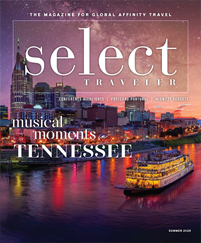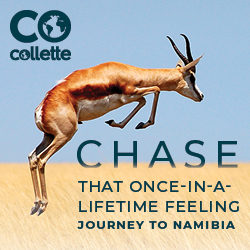They are some of the most celebrated spots in the South, blessed with natural splendor, historical import or simple, outsized beauty. Whatever the reason for their renowned status as must-see attractions, the following places also offer group visitors the chance to explore their riches in unique and diverse ways. As such, they make great stops on any motorcoach tour exploring the land below the Mason-Dixon line.
New River Gorge National Park and Preserve
Glen Jean, West Virginia
The New River Gorge may be the site of America’s most recent national park, a 70,000-acre gem officially crowned in December 2020. But the waterway itself is ancient, the second-oldest river on earth. And that isn’t even all that distinguishes the area. In Fayetteville, the legendary New River Gorge Bridge crosses over the channel. At 876 feet high, it’s one of the tallest bridges in the country, as well as the longest single-span arch bridge in the Western Hemisphere.
Groups looking for serious adventure can arrange to cross the structure’s catwalk with Bridge Walk, located next door to the Canyon Rim Visitor Center, just north of Fayetteville. The center itself is also a great group stop, offering a film, exhibits relating to the river’s history and stunning overlooks.
“There’s just about every outdoor recreational opportunity you can think of available here, too,” said Becky Sullivan, executive director of the New River Gorge Convention and Visitors Bureau. “From whitewater rafting to rock climbing, mountain biking, hiking, just about anything groups can think of to do outdoors they can do here.”
Little Rock Central High School National Historic Site
Little Rock, Arkansas
In 1957, Little Rock Central High School became ground zero in the struggle for civil rights when nine Black teenagers attempted to attend the all-white learning institution. The move followed a landmark ruling by the Supreme Court that found public school segregation unconstitutional and led to the Arkansas governor’s mobilizing the state’s national guard to prevent the youth from entering the school. As the world watched, President Dwight Eisenhower was forced to call in federal troops to escort the Little Rock Nine safely to class, desegregating Central High at long last.
Today, the National Historic Site offers free group tours, which include a stop at the visitor center.
“It has interactive exhibits, and you can hear the Little Rock Nine’s story in their voices,” said Libby Lloyd, communications manager for the Little Rock Convention and Visitors Bureau. “And then when you take that physical tour with the national park ranger, you walk in the footsteps of the Nine. You get to go into the school. They take you through the halls, the auditorium, the lunchroom, the cafeteria, and they tell you stories of what the Little Rock Nine endured. It’s a moving, profound experience.”
U.S. Space and Rocket Center
Huntsville, Alabama
With a history that dates back to 1970, the U.S. Space and Rocket Center tells the fascinating tale of how Huntsville’s Marshall Space Flight Center contributed to cosmic exploration.
“It’s the birthplace of NASA,” said Patricia Ammons, the center’s senior director of communications. “The Marshall Space Flight Center is where the team who developed the Saturn V rocket that took America to the moon worked. They also developed and launched the first American satellite. The U.S. Space and Rocket Center was founded to recognize Alabama’s role in space exploration.”
Among the artifacts groups can ogle at the center are the National Historic Landmark Apollo Saturn V moon rocket, a Skylab training module and a real lunar rock. And hands-on opportunities range from the new Apollo 11 Virtual Reality Experience, an interactive documentary that re-creates the historic journey to the moon, to flight simulators, which give group visitors the opportunity to learn what it’s like to get behind the controls of an F-18 Super Hornet.
Churchill Downs
Louisville, Kentucky
You don’t have to be a horse racing devotee to get a kick out of Churchill Downs. Home to the Kentucky Derby, the oldest continually held sporting event in the nation, the track will appeal to even the most casual history fan or architectural aficionado. How could group members not be entranced by Churchill Downs, which still boasts its first buildings, among them the grandstand, the clubhouse and six stables, erected in 1875? As of this May, those initial structures will have stood through an astounding 147 consecutive Derby runnings.
There are many ways groups can experience Churchill Downs: a basic package that provides admission to the Kentucky Derby Museum, a viewing of the 360-degree film “The Greatest Race” and a guided, 30-minute tour of the track. Or planners can opt to give their groups a premium experience, like the Backstretch Breakfast Tour.
“You’ll have breakfast on the backside of the track,” said Jordan Skora, marketing communications manager for Louisville Tourism. “So you’ll be able to drink your coffee and eat your eggs while watching the Thoroughbreds warm up in the morning, which is a really cool experience.”
Biltmore
Asheville, North Carolina
In all the country, there is no other structure quite like the Biltmore in Asheville, North Carolina. The nation’s largest private house, it “was originally the family home of George and Edith Vanderbilt, and the estate remains as magnificent today as it was when it was built more than a century ago,” said Marissa Jamison, public relations manager for Biltmore. “Today, Biltmore encompasses more than 8,000 acres and includes renowned gardens designed by Frederick Law Olmsted, the father of American landscape architecture. The Vanderbilt family’s 250-room French Renaissance-style chateau sits on the estate and is preserved and filled with original furnishings, antiques and masterpieces of art.”
Groups can explore the legendary property beginning with a house tour and continuing through more adventurous activities like mountain biking, falconry, carriage rides, river trips, an off-road driving experience, sporting clays and more. Group visitors can stop in for a complimentary tasting at the Biltmore Winery, attend a bespoke reception on the rooftop or in the champagne cellar or take a guided garden walk. At the Biltmore, there is almost no end to the special options for groups.
Colonial Williamsburg
Williamsburg, Virginia
Both a living-history museum and a historical landmark, Virginia’s Colonial Williamsburg got its start in the late 1920s when philanthropist John D. Rockefeller Jr. committed to financially supporting the effort to return a slice of Williamsburg to its Colonial past. By 1932, the reconstructed Raleigh Tavern had opened as the first public exhibition building; nowadays, Colonial Williamsburg unspools over more than 300 acres, encompassing 600-some structures and everything from horse-drawn carriages to trade shops and costumed historical interpreters. Experiences there are deeply engaging, including opportunities to observe an active archaeological dig and take part in a live 18th-century-style auction.
Groups are welcomed on tours of the historic area, though more specialized programs are also available. They include “period-inspired evening musical and dramatic programs and tours of Haunted Williamsburg,” said Joseph Straw, senior public relations manager at the Colonial Williamsburg Foundation. “Groups are also invited to experience the Art Museums of Colonial Williamsburg, which reopened in 2020 following a $42 million expansion. For the definitive Colonial Williamsburg dining experiences, guests are welcome at the newly revamped King’s Arms Tavern, which originally opened in 1772.”









